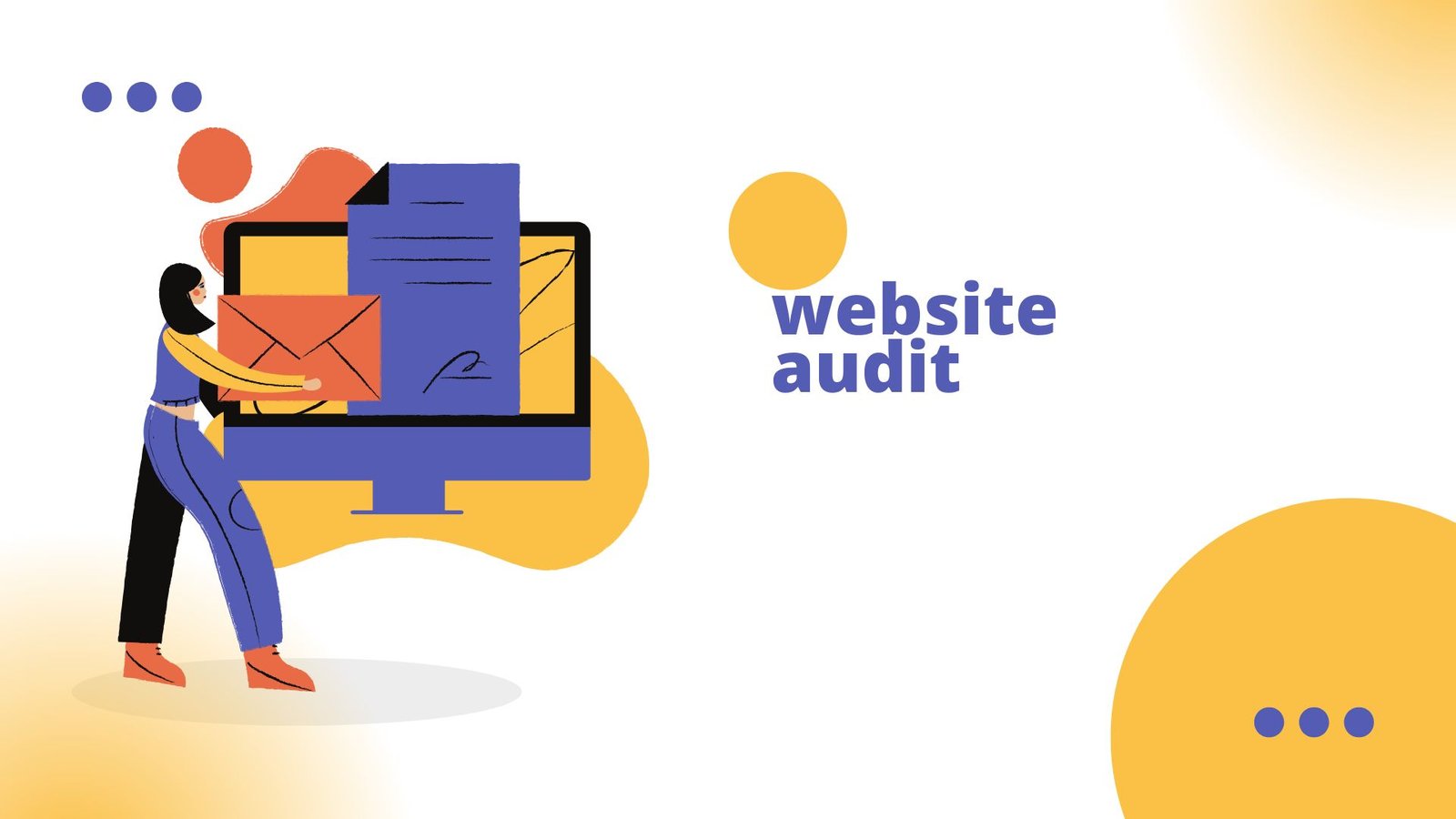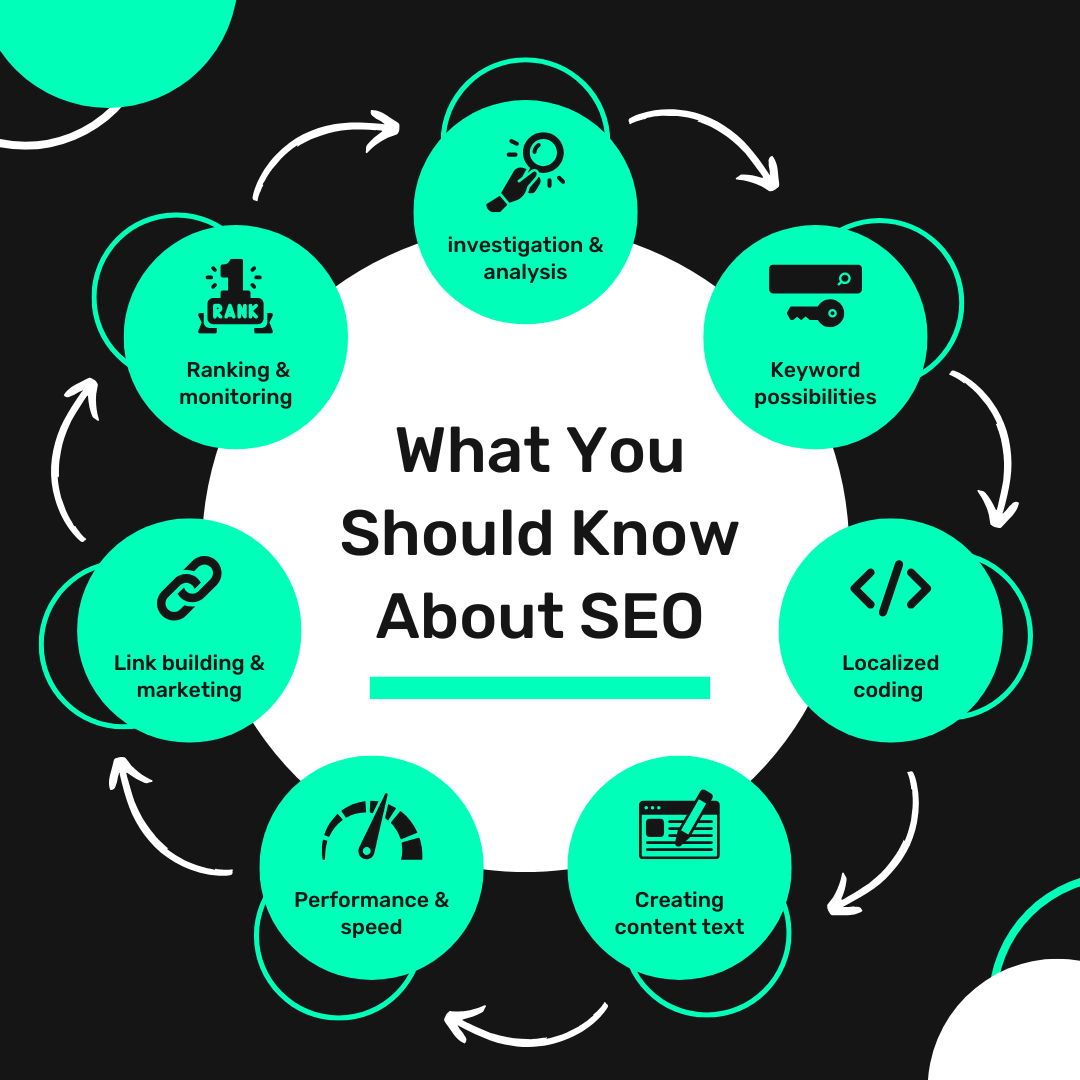A website audit is a detailed evaluation of your website to identify issues affecting its performance, SEO, user experience, and security. The goal is to find and fix errors to improve overall site functionality and rankings. Why Conduct a Website Audit? Improve SEO: Identify and fix issues that prevent better rankings. Boost Performance: Enhance website speed and responsiveness. Enhance User Experience (UX): Ensure seamless navigation and usability. Strengthen Security: Detect vulnerabilities to protect against cyber threats. Optimize Conversion Rates: Ensure all elements work correctly to drive user actions like sign-ups or purchases. Types of Website Audits Technical Audit: Focuses on the website’s backend and infrastructure. SEO Audit: Evaluates how well the website is optimized for search engines. Content Audit: Assesses the quality and relevance of content. Performance Audit: Measures speed, responsiveness, and mobile usability. Security Audit: Checks for vulnerabilities and compliance with security standards. Steps for a Comprehensive Website Audit 1. Technical Audit Crawl the Website: Use tools like Screaming Frog, Ahrefs, or SEMrush to crawl the site and find errors like broken links, duplicate content, and redirect chains. Check Indexability: Ensure all important pages are indexed by search engines using Google Search Console. Inspect XML Sitemap: Verify that the sitemap is up-to-date and properly submitted to search engines. Review Robots.txt: Check that the file is not blocking important pages from being crawled. 2. SEO Audit Analyze Keywords: Ensure targeted keywords are present in titles, meta descriptions, headers, and content. Meta Tags: Fix missing, duplicate, or poorly written meta titles and descriptions. URL Structure: Ensure URLs are short, descriptive, and include relevant keywords. Backlinks: Use tools like Ahrefs to analyze your backlink profile and disavow toxic links. Canonicalization: Prevent duplicate content issues with proper canonical tags. 3. Content Audit Content Quality: Identify low-quality or outdated content and update it to match current standards. Duplicate Content: Use tools like Copyscape or Siteliner to detect and remove duplicate content. Content Gaps: Find opportunities for new content that addresses user needs and aligns with your business goals. Readability: Ensure content is easy to read and matches the target audience’s preferences. 4. Performance Audit Page Speed: Test loading times using tools like Google PageSpeed Insights or GTmetrix. Optimize images, use caching, and minify CSS/JS. Mobile-Friendliness: Check responsiveness with Google’s Mobile-Friendly Test. Core Web Vitals: Evaluate metrics like Largest Contentful Paint (LCP), First Input Delay (FID), and Cumulative Layout Shift (CLS). Broken Links: Fix 404 errors and redirect broken links to relevant pages. 5. Security Audit SSL Certificate: Ensure the site uses HTTPS for secure communication. Vulnerability Scanning: Use tools like Sucuri or Qualys to scan for vulnerabilities. Regular Updates: Keep CMS, plugins, and themes updated to avoid security risks. Backup System: Implement regular backups to recover quickly in case of a breach. 6. User Experience (UX) Audit Navigation: Ensure menus and navigation are intuitive and user-friendly. Call-to-Actions (CTAs): Make sure CTAs are clear, visible, and lead to functional pages. Accessibility: Ensure the website complies with accessibility standards like WCAG. Forms and Buttons: Test all forms, buttons, and interactive elements to ensure they work correctly. 7. Analytics & Tracking Google Analytics: Verify tracking codes are installed and working correctly. Conversion Tracking: Ensure goals like form submissions and purchases are tracked. Heatmaps: Use tools like Hotjar to analyze user behavior and improve UX. Common Website Errors and How to Fix Them 1. Broken Links (404 Errors): Solution: Use tools like Screaming Frog or Google Search Console to identify and fix broken links by updating them or setting up 301 redirects. 2. Slow Page Speed: Solution: Optimize images, enable browser caching, minify CSS/JavaScript, and use a Content Delivery Network (CDN). 3. Missing Meta Tags: Solution: Add or update title tags and meta descriptions for all pages. 4. Duplicate Content: Solution: Use canonical tags or rewrite duplicate pages. 5. Non-Mobile-Friendly Design: Solution: Implement responsive design and test usability on various devices. 6. Incorrect Indexing: Solution: Check robots.txt, noindex tags, and ensure the sitemap is correctly submitted. 7. Poor Keyword Optimization: Solution: Use keyword research tools to optimize content for high-value terms. 8. Weak Backlink Profile: Solution: Disavow toxic backlinks and focus on building quality links. 9. Missing SSL Certificate: Solution: Install an SSL certificate to switch from HTTP to HTTPS. 10. Core Web Vitals Issues: Solution: Address specific Core Web Vitals metrics like LCP, FID, and CLS through performance optimization. Tools for Website Audits SEO Tools: Ahrefs, SEMrush, Moz, Ubersuggest Performance Tools: Google PageSpeed Insights, GTmetrix, Pingdom Technical Tools: Screaming Frog, Google Search Console Content Tools: Siteliner, Copyscape Security Tools: Sucuri, Qualys SSL Labs Benefits of Website Audit & Error Removal Improved SEO Rankings: Fixing errors increases visibility on search engines. Enhanced User Experience: A well-optimized website leads to better engagement and conversions. Higher Security: Regular audits prevent potential data breaches. Increased Traffic: Better performance and content attract more visitors. Optimized Conversions: Smooth functionality ensures higher lead generation and sales. Let me know if you’d like help conducting an audit or creating a step-by-step checklist for your website!
Keyword Research
Keyword Research is the foundational step in SEO and digital marketing that involves identifying the words and phrases (keywords) your target audience uses when searching for information, products, or services online. Effective keyword research helps you understand your audience’s needs, craft relevant content, and improve your website’s visibility on search engines. Steps for Effective Keyword Research 1. Understand Your Audience and Goals Define your target audience: Who are they? What problems are they trying to solve? Identify your business goals: Are you focusing on brand awareness, lead generation, or sales? Consider the buyer’s journey: Map keywords to different stages (awareness, consideration, decision). 2. Use Keyword Research Tools Keyword research tools help identify potential keywords, their search volume, competition level, and other valuable insights. Popular tools include: Google Keyword Planner: Ideal for finding new keywords and analyzing competition. Ahrefs: Comprehensive data on keyword difficulty, traffic potential, and competitor analysis. SEMrush: Detailed keyword research and SERP analysis. Ubersuggest: Simple tool for keyword suggestions and trends. AnswerThePublic: Visualizes keyword questions and phrases based on user queries. 3. Identify Seed Keywords Seed keywords are basic terms related to your business, products, or services. For example: If you’re a web designer, seed keywords might be “website design,” “web development,” or “UI/UX design.” These terms act as a starting point for finding long-tail keywords. 4. Analyze Search Intent Understanding search intent helps align keywords with what users are actually looking for: Informational Intent: Users want to learn (e.g., “how to design a website”). Navigational Intent: Users seek specific websites or pages (e.g., “Figma tutorial”). Transactional Intent: Users are ready to take action (e.g., “buy website templates”). Commercial Investigation: Users are comparing options (e.g., “best website builders 2024”). 5. Find Long-Tail Keywords Long-tail keywords are longer, more specific phrases with lower search volume but higher conversion potential. Example: Instead of “web design,” use “affordable web design services for small businesses.” Benefits: Lower competition. Higher relevance to niche audiences. Better for voice search optimization. 6. Evaluate Keyword Metrics Look for the following metrics to prioritize keywords: Search Volume: The number of searches for a keyword per month. Keyword Difficulty (KD): A score indicating how hard it is to rank for a keyword. CPC (Cost Per Click): Useful if you’re running paid ads; indicates the competition level in PPC campaigns. Traffic Potential: The estimated traffic a page could get if it ranks for a keyword. 7. Analyze Competitors Use tools like Ahrefs or SEMrush to analyze the keywords your competitors are ranking for. Identify gaps: Keywords they rank for but you don’t, which can present new opportunities. Study their content strategy: How they are using keywords in their titles, headers, and meta descriptions. 8. Group and Categorize Keywords Organize keywords into clusters based on topics or themes. Example: Topic: “Web Design” Keywords: “custom web design services,” “responsive web design examples.” Topic: “SEO for Websites” Keywords: “SEO-friendly website design,” “on-page SEO tips for designers.” 9. Incorporate Keywords Strategically Use primary keywords in key areas of your content: Title tags, meta descriptions, headers, URL, and throughout the body content. Avoid keyword stuffing; prioritize natural integration. Focus on user experience while maintaining keyword relevance. 10. Monitor and Update Keywords SEO is dynamic, so regularly revisit your keyword strategy. Use tools like Google Analytics and Search Console to track performance. Adapt to trends and changes in search behavior. Benefits of Keyword Research Improved SEO Rankings: Targeting the right keywords helps you rank higher for relevant queries. Increased Traffic: Attract more visitors by optimizing for terms your audience is searching for. Better Content Strategy: Create content that addresses user needs and questions. Higher Conversion Rates: Use keywords with clear intent to attract users ready to take action. Cost Efficiency in Ads: Target relevant keywords in paid campaigns to maximize ROI. Keyword Research in Action Here’s an example of applying keyword research for a “web design” business: Seed Keyword: “web design” Related Keywords: “affordable web design services” “responsive web design examples” “custom website design pricing” Search Intent: Informational: “What is responsive web design?” Transactional: “Hire web design agency near me.” Content Ideas: Blog: “Top 10 Web Design Trends in 2024” Service Page: “Affordable Web Design Services for Small Businesses” FAQ: “How much does a custom website cost?” Would you like help with a specific keyword research task or creating a list of keywords for your niche?
Types of SEO
There are several types of SEO, each focusing on different aspects of optimizing a website for search engines and users. Here’s a detailed breakdown: 1. On-Page SEO Focuses on optimizing individual web pages to rank higher and earn more relevant traffic. Key Elements: Keyword Research: Finding and using the right keywords that match user intent. Content Optimization: Writing high-quality, keyword-rich, and engaging content. Meta Tags: Optimizing title tags, meta descriptions, and headings (H1, H2, etc.). Internal Linking: Linking between your site’s pages to improve navigation and spread link equity. Image Optimization: Using descriptive alt text, compressing images for faster load times, and including keywords in file names. URL Structure: Ensuring URLs are short, descriptive, and contain target keywords. 2. Off-Page SEO Involves activities outside your website that impact its authority and rankings. Key Elements: Backlink Building: Acquiring high-quality links from authoritative and relevant websites. Social Signals: Social media shares, likes, and mentions that indirectly boost SEO. Guest Blogging: Writing articles for other websites to gain exposure and backlinks. Brand Mentions: Gaining mentions of your brand online, even without direct links. Influencer Outreach: Collaborating with influencers to promote your content or website. 3. Technical SEO Focuses on the backend structure and technical aspects of a website to improve its crawlability and indexability. Key Elements: Website Speed: Ensuring fast loading times for better user experience. Mobile Optimization: Making the site responsive and mobile-friendly. Secure Website (HTTPS): Using SSL certificates to secure the website. XML Sitemap: Creating a sitemap to help search engines understand your site structure. Robots.txt: Managing which pages search engines can and cannot crawl. Fixing Crawl Errors: Using tools like Google Search Console to identify and resolve issues. Structured Data (Schema Markup): Adding code to provide more information to search engines and enhance rich snippets. 4. Local SEO Targets customers in specific geographic locations, ideal for businesses with physical locations or local services. Key Elements: Google My Business (GMB): Optimizing your GMB profile for better local visibility. Local Keywords: Using location-specific keywords in your content and meta tags. NAP Consistency: Ensuring your business Name, Address, and Phone number are consistent across all online platforms. Customer Reviews: Encouraging positive reviews on platforms like Google, Yelp, and others. Local Citations: Listing your business in local directories and industry-specific sites. 5. E-commerce SEO Designed for online stores to improve product visibility and drive sales. Key Elements: Product Page Optimization: Writing compelling product descriptions with target keywords. Category Page Optimization: Optimizing category pages for broader search terms. Image Optimization: Using descriptive alt tags and compressing images for faster load times. Site Navigation: Making it easy for users to find products. Schema Markup: Adding product schema for rich snippets like ratings, price, and availability. 6. Content SEO Focuses on creating and optimizing high-quality, relevant content. Key Elements: Blogging: Regularly publishing keyword-targeted, informative blogs. Content Depth: Providing detailed and in-depth information that answers user queries. Multimedia Content: Using videos, infographics, and images to enhance engagement. User Intent: Aligning content with the searcher’s intent (informational, navigational, transactional). 7. Mobile SEO Ensures the website performs well on mobile devices, which is crucial due to Google’s mobile-first indexing. Key Elements: Responsive Design: Creating a site that adapts to different screen sizes. Page Speed: Optimizing for fast loading on mobile networks. Mobile Usability: Ensuring buttons, fonts, and navigation are user-friendly on small screens. Local Optimization: Combining mobile and local SEO for location-based searches. 8. Video SEO Optimizes video content to rank higher in search results and on platforms like YouTube. Key Elements: Video Titles and Descriptions: Writing keyword-rich titles and descriptions. Thumbnails: Designing engaging thumbnails that encourage clicks. Transcripts and Subtitles: Adding transcripts for better indexing and accessibility. Video Tags: Using relevant tags to improve discoverability. YouTube SEO: Optimizing content specifically for YouTube’s search algorithm. 9. International SEO Focuses on optimizing websites for global audiences and ensuring content is accessible in multiple languages and regions. Key Elements: Hreflang Tags: Indicating language and regional targeting to search engines. Country-Specific Keywords: Using keywords that resonate with the target region. Localized Content: Creating content tailored to specific countries or cultures. Global Hosting: Using CDN (Content Delivery Networks) to ensure fast loading worldwide. 10. Negative SEO A defensive approach to identify and mitigate harmful tactics used by competitors to damage your rankings. Key Elements: Monitoring Backlinks: Identifying and disavowing spammy or toxic backlinks. Competitor Analysis: Keeping an eye on malicious activities like fake reviews or duplicate content. Regular Audits: Conducting frequent SEO audits to spot and resolve potential issues.
SEO
What is SEO? SEO is the practice of optimizing a website or web pages to rank higher in search engine results pages (SERPs) to increase organic (non-paid) traffic. It involves understanding how search engines like Google work and using strategies that align with the algorithms they use to rank web pages. Key Elements of SEO On-Page SEO: On-page SEO refers to the elements within your website that you can control to improve its ranking. These include: Keyword Research: Identifying the search terms (keywords) that users are searching for, which are relevant to your business, product, or content. Title Tags: Crafting compelling, keyword-rich titles that accurately describe the content of the page. Meta Descriptions: Writing engaging meta descriptions (the short snippets shown under the title in search results) that encourage clicks. Headings (H1, H2, H3, etc.): Proper use of headers to organize content and make it easier to read while ensuring keyword integration. URL Structure: URLs should be short, descriptive, and include relevant keywords. Internal Linking: Linking between pages within your website to help users navigate and spread link equity throughout your site. Image Optimization: Using descriptive alt text for images, optimizing image file sizes for faster load times, and including keywords where relevant. Off-Page SEO: Off-page SEO involves activities that occur outside of your website but still affect your rankings. The most important factors are: Backlinks: Links from external websites that point to your site. Quality backlinks from authoritative, relevant websites improve your site’s trustworthiness and rankings. Social Media Signals: Social media activity (shares, likes, comments) that can indirectly influence SEO by driving traffic and signaling to search engines that your content is relevant. Brand Mentions: When your brand or content is mentioned online, even if no link is provided, it can enhance visibility and SEO. Technical SEO: Technical SEO focuses on the backend elements of a website that influence its ability to be crawled and indexed by search engines. Key aspects include: Site Speed: Google considers page speed as a ranking factor. Faster websites provide a better user experience and are preferred by search engines. Mobile-Friendliness: Ensuring your site is responsive and looks great on mobile devices, as Google uses mobile-first indexing. XML Sitemap: A file that helps search engines understand the structure of your website and find all the important pages. Robots.txt: A file that tells search engines which pages to crawl and which to ignore. Secure Website (HTTPS): A secure website (using SSL certificates) is favored by Google and gives users confidence when visiting your site. Content SEO: Content is a major factor in SEO. High-quality, engaging content that answers the searcher’s query is crucial for improving rankings. This includes: Content Depth: Providing detailed, valuable information that solves the user’s problem or answers their questions. Keyword Optimization: Integrating primary and secondary keywords naturally within the content. User Experience (UX): Creating content that is easy to read, navigate, and engage with, while also maintaining relevance and quality. Fresh Content: Regularly updating content to keep it relevant and up to date with current trends and search algorithms. Local SEO: Local SEO is important for businesses that operate in specific geographical areas. Key components include: Google My Business: Claiming and optimizing your Google My Business profile, ensuring your business appears in local search results and Google Maps. Local Keywords: Including location-based keywords in your content and meta tags to attract local customers. Local Citations: Consistent mentions of your business on local directories, review sites, and other platforms. Reviews: Positive reviews on platforms like Google, Yelp, and other relevant sites can improve local SEO. SEO Best Practices Mobile Optimization: Since mobile traffic now exceeds desktop, ensuring your website is mobile-friendly is a critical part of SEO. Voice Search Optimization: As voice assistants become more popular, optimizing for voice search by targeting natural, conversational phrases and long-tail keywords is essential. Structured Data (Schema Markup): Adding structured data helps search engines understand the context of your content, which can lead to rich snippets and improved rankings. User Engagement Metrics: Google considers user engagement factors such as click-through rate (CTR), time spent on site, and bounce rate. Optimizing content to keep users engaged can indirectly improve SEO. SEO Analytics: Using tools like Google Analytics and Google Search Console to track your site’s performance, monitor organic traffic, and identify opportunities for improvement. Why SEO is Important Increased Visibility: Ranking higher in search results increases the chances of users clicking on your site, leading to more traffic. Cost-Effective Marketing: Unlike paid advertising, SEO is an ongoing strategy that builds organic traffic over time. Trust and Credibility: Websites that appear in the top search results are often seen as more credible and trustworthy by users. Better User Experience: A well-optimized website not only ranks better but also provides a better experience for users, leading to higher satisfaction and engagement. Long-Term Results: Unlike paid advertising, the results from SEO can last longer, providing sustained traffic and growth over time. In conclusion, SEO is an ongoing process that involves a combination of strategies aimed at improving your website’s visibility, credibility, and user experience. By mastering on-page, off-page, and technical SEO, you can increase your chances of ranking higher in search engines, driving more organic traffic, and achieving long-term business success.
How Much Should a Website Cost?
The average cost to build a website (with an agency or freelancer) is $1000 – $145,000 — with a website builder, the cost is $0 to $500 per month. Meanwhile, routine site maintenance costs $3600 – $50,000 per year or $0 to $5400 per year with a website builder. Keep reading to discover more website pricing info so you can answer the question, “how much does a website cost?”! The cost of a website can vary greatly depending on several factors, including the complexity, features, design, functionality, and whether you’re hiring a professional or using a DIY platform. Below is a breakdown of typical website costs based on different factors: 1. DIY Website Builders (e.g., Wix, Squarespace, WordPress.com) These platforms allow you to create your own website with little to no coding required. They’re user-friendly, but come with limitations in terms of customization. Cost Range: $10 – $50 per month (depending on plan) Basic Plan: Includes hosting, a domain name (usually free for the first year), and templates. Premium Plan: Includes more advanced features like eCommerce capabilities, additional storage, or premium templates. Pros: Affordable, fast setup, user-friendly. Cons: Limited customization, less scalability, and control over hosting and data. 2. Freelance Web Developers If you want a custom-built website but don’t want to go with a full agency, hiring a freelance web developer can offer a middle ground. Cost Range: $500 – $10,000+ (depending on complexity and experience) Simple Websites: $500 – $2,000 (static pages, basic design, minimal functionality) Intermediate Websites: $2,000 – $5,000 (dynamic websites, custom design, CMS integration) Complex Websites: $5,000 – $10,000+ (eCommerce, custom features, complex integrations, etc.) Pros: Custom design, tailored to your needs. Cons: Quality depends on the developer, requires project management. 3. Web Design Agencies If you want a more comprehensive service that includes branding, advanced design, content strategy, and ongoing support, an agency might be a good option. Cost Range: $5,000 – $50,000+ (depending on the scope of work) Small Business Websites: $5,000 – $10,000 (including basic CMS, SEO optimization, and a custom design) Mid-sized Companies: $10,000 – $25,000 (includes advanced design, eCommerce, custom CMS, SEO, and more) Enterprise Websites: $25,000 – $50,000+ (includes complex functionality, integrations, extensive support, and marketing strategy) Pros: End-to-end service, high quality, ongoing support. Cons: Expensive, longer timeline, higher overhead. 4. E-commerce Websites If you need an e-commerce store (e.g., Shopify, WooCommerce, Magento), the cost can increase significantly due to the need for additional functionality like payment gateways, inventory management, and product pages. Cost Range: Small-Scale eCommerce Website: $2,000 – $10,000 (basic store with up to 100 products) Medium-Scale eCommerce Website: $10,000 – $25,000 (advanced design, larger catalog, more functionality) Large-Scale eCommerce Website: $25,000+ (custom design, enterprise integrations, custom functionalities) Additional Costs: Payment processing fees, monthly subscription costs (e.g., Shopify), product photos, marketing, etc. 5. Ongoing Maintenance and Updates Websites usually require ongoing maintenance to ensure security, performance, and functionality. This can include things like software updates, backups, bug fixes, and content updates. Cost Range: $50 – $200+ per month (for small to medium sites) Hourly Rates: Freelancers and agencies often charge $50 – $150 per hour for maintenance tasks. Factors that Affect the Cost of a Website: Design Complexity: Custom designs are more expensive than using templates. Functionality: Additional features (e.g., e-commerce, booking systems, membership areas) add to the cost. Number of Pages: A larger website with more pages or content can be more expensive. SEO and Marketing: If you want SEO optimization, content creation, or digital marketing services, this can add to the total cost. Custom Development: More complex websites, such as those with custom databases, integrations, or advanced functionality, will cost more. Content Creation: Copywriting, photography, and video production can add significant costs. A Typical Breakdown for a Small Business Website: Domain Name: $10 – $20/year Hosting: $5 – $50/month Design/Development: $2,000 – $10,000 (one-time cost) SEO & Marketing: $500 – $2,000/month (optional) Maintenance: $50 – $200/month (optional) Final Thoughts: The cost of a website will depend on your goals, budget, and the level of customization you need. If you’re on a tight budget, DIY builders are a good starting point. If you need something more custom and complex, you’ll need to budget for a professional developer or agency. Always get quotes from multiple developers or agencies and make sure you have a clear understanding of the scope of work before you commit.






